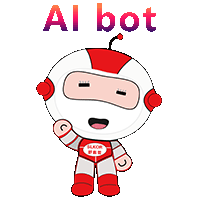With the advancement of technology, household appliances around us are becoming increasingly "smart," enhancing people's quality of life. However, this trend has left some elderly individuals feeling overwhelmed. For instance, some elderly people may seek traditional pressure cookers without electronic buttons, which are now difficult to find in offline stores. They may also be startled when their water heaters start "talking" for no apparent reason.
The progress of mobile internet, artificial intelligence, and other technologies has led many household appliances to enter the realm of "smart homes," providing new experiences for numerous consumers. However, for some elderly consumers, even common items like pots, pans, and utensils suddenly become unfamiliar once they are associated with "smart" features. Achieving "accessible cooking" becomes a distant dream.
Smartification is one of the trends in the development of household appliances, and it is understandable that companies in the industry are embracing smart technology for competitive advantage. However, we must acknowledge the reality that China has around 300 million elderly people, and as the population ages, this number may increase. Many elderly individuals struggle to adapt to smart appliances due to factors such as limited knowledge, ingrained habits, and difficulties in learning new things. For example, smart TV remote controls with numerous buttons can be overwhelming for many elderly viewers. Assisting the elderly in leading a "stress-free" life should not become an insurmountable challenge.
To cope with the wave of aging and improve the happiness of the elderly population, the "14th Five-Year Plan for National Aging Development and Elderly Care Service System" proposes the concept of building a "smart society" that considers the needs of the elderly. In the field of household appliances, national standards such as "Aging-Friendly Technology for Smart Home Appliances," "Architectural Model of Smart Home Appliances for Elderly Living Assistance," and "General Technical Requirements for Household Appliances Suitable for the Elderly" have been successively issued.
However, there is still a considerable gap between the level of smart home appliances' aging-friendliness and the expectations of the elderly. Before smart appliances truly become age-friendly, it is crucial to ensure the production and supply of traditional appliances that cater to the needs of the elderly. Although there have been numerous standards related to aging-friendly smart appliances, the transformation into market-ready products with aging-friendly features is an ongoing process. During this transition period, the consumption demands of the elderly should not be overlooked.
In an aging society, the "silver economy" trend is surging. For relevant industries, developing and producing products that meet the needs of the elderly at an earlier stage increases the likelihood of securing a stable position in the market. This concept is not difficult to comprehend. It is hoped that relevant enterprises can reevaluate their market positioning and competitive strategies, transforming the opportunities and pressures of the "silver economy" into brand competitiveness. According to the "Action Plan for Promoting High-Quality Development of Digital Technology for Aging-Friendliness" issued by the Ministry of Industry and Information Technology, over 100 smart products with aging-friendly features covering multiple categories such as mobile phones and televisions will be released by the end of 2025, creating much anticipation.
What kind of smart home products do the elderly truly need?
How can we develop genuinely aging-friendly products?
These are questions worthy of deep consideration.

 en
en 









